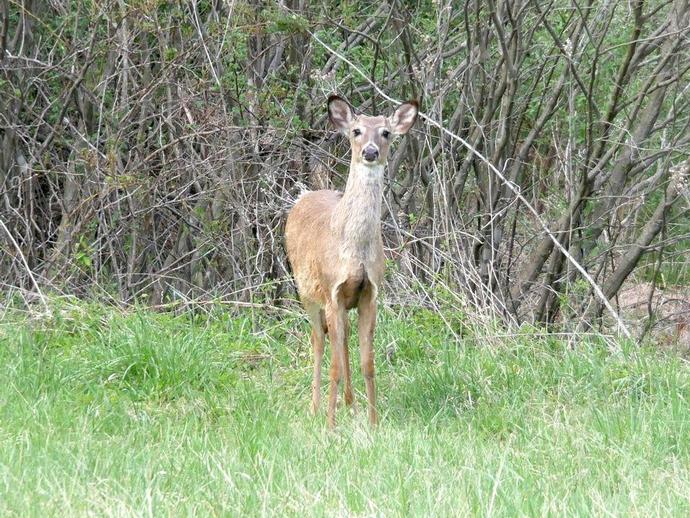October 25, 2020
We're reaching into the archives for today's #BenInNature post! The following post was originally published on April 8, 2020.
The white-tailed deer (Odocoileus virginianus) is truly a majestic animal, unless you manage to snap a photo of one sticking its tongue out. White-tailed deer can be found just about anywhere east of the Rocky Mountains in the U.S.; west of the Rockies, they are replaced by mule deer and black-tailed deer. They can also be found as far south as Bolivia and Peru in South America, and they have been introduced in Cuba, New Zealand, several European countries, and a slew of other places.
In southwest Virginia, seeing a white-tailed deer is about as common as seeing a sunrise. A hundred years ago, however, white-tailed deer were pretty scarce in much of the U.S., as they were victims of unregulated hunting and commercial exploitation. Around 1930, it was estimated that there were fewer than 300,000 spread across the U.S. I remember my great-uncle "Daddy" Bob Sizemore (a man who loved hunting so much that he made Ernest Hemingway look like a dilettante) telling me that back in the '70s, you had to drive to rural parts of North Carolina if you just wanted to catch a glimpse of a white-tailed deer.
Now, of course, conservation efforts have more than saved the white-tailed deer, and it's estimated that there are more than 30 million in the U.S. alone. One reason that white-tailed deer are so abundant is that while humans have been great conservationists of deer, we haven't been so successful with their natural predators. The U.S. Fish and Wildlife Service concluded in 2011 that the eastern cougar has been extinct since the 1930s (on a side note, while western cougars do occasionally make it to the east, they haven't really put down roots yet, though they may in the coming decades). Love 'em or hate 'em, white-tailed deer are here to stay.
ABOUT #BenInNature
Social distancing can be difficult, but it presents a great opportunity to become reacquainted with nature. In this series of posts, Administrator of Science Ben Williams ventures outdoors to record a snapshot of the unique sights that can be found in the natural world. New updates are posted Monday - Friday, with previous posts highlighted on the weekends.
NATURE PHOTO IDENTIFICATIONS
If you discover something in nature that you would like help identifying, be sure to message us right here on Facebook with a picture (please include location and date of picture) and we'll have our experts help you identify it!

 Hours & Admissions
Hours & Admissions Directions
Directions

